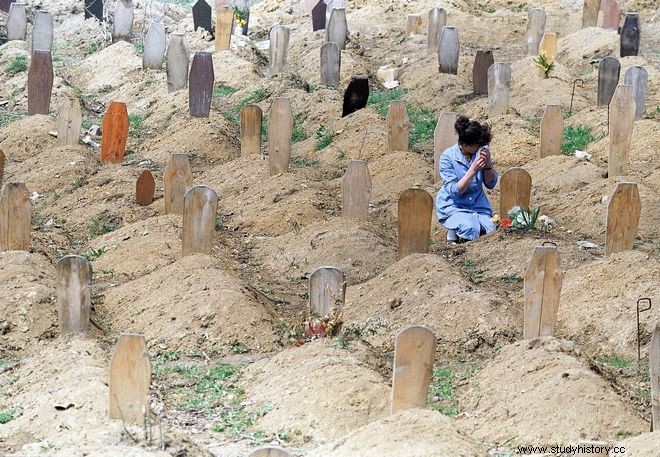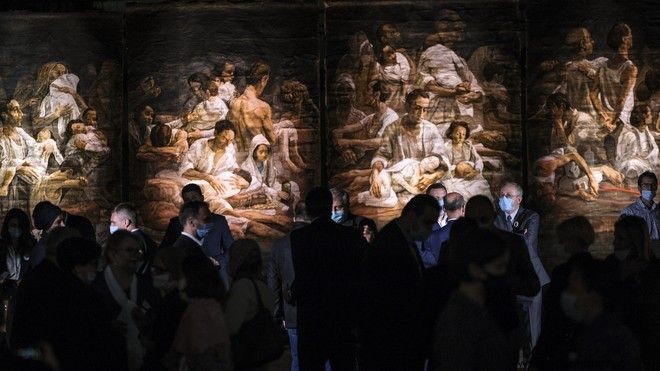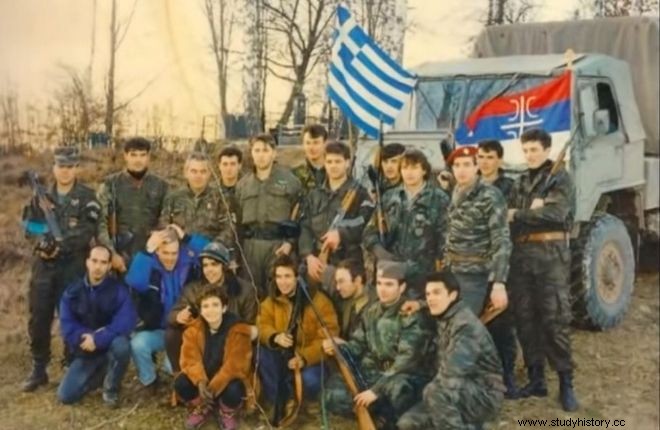Twenty-five years have passed today Saturday since the most massive extermination of people in the history of Europe after the second world war, and the commemorative events in Bosnia-Herzegovina are also peaking. A massacre characterized as genocide by the International Criminal Tribunal for the former Yugoslavia at The Hague.
This tragedy was a turning point in the Bosnian civil war between Muslims, Serbs and Croats and claimed the lives of over 100,000 people, while uprooting 2.2 million people.

Since the beginning of the conflict that broke out in Bosnia in April 1992, the Bosnian Serb armed forces have laid siege to Srebrenica, a predominantly Muslim town in eastern Bosnia, 15 kilometers from Serbia.
The city had been declared a safe area by UN troops two years earlier and was guarded by Dutch soldiers. When the Serbs occupied it, the much smaller Dutch, did not fire a single rifle to defend the city. Many Bosniaks went to the UN camp to seek protection and several were not accepted. The UN soldiers desperately asked for support, which was never given.
The Serbs separated the men, old men and boys from the women and killed them. They murdered about 8,000 people, dumping their bodies in mass graves. After considering what happened, the Dutch government resigned.
As sansimera writes, Srebrenica became the symbol of shame, not only for the scale of the carnage, but also for the fact that it happened in a city that was under the absolute protection of the United Nations. The 100 Dutch blue-collar men overseeing the area proved to be insufficient in quantity and quality, while the aid promised to them by the UN came after the end of the Massacre. Thus, the Bosnian Serb forces were left undisturbed to carry out and complete their "lovely" ethnic cleansing work.
On February 26, 2007, the International Court of Justice in The Hague issued its judgment in the case of Bosnia and Herzegovina v. the former Yugoslavia regarding the Srebrenica massacre. former Yugoslavia. The court also ruled that Serbia, as the sole successor to the former Yugoslavia after Montenegro left the federation, violated international law by failing to take any measures to prevent the genocide.

In the massacre of Srebrenica, the participation of 30-40 Greek paramilitaries, members of the Hellenic Volunteer Guard, who hoisted the Greek, Byzantine and Vergina flags next to the Serbian flag the day after the massacre, is considered possible.
In fact, Ratko Mladic asked the Greek nationalists to raise the Greek flag in the ruined Srebrenica, while Radovan Karadzic decorated them. The Greek volunteers in Bosnia believed they were "fighting for a holy cause, defending Europe and Christianity from the ravages of Islam".

In the tragedy from the Greek side, Spyros Tzanopoulos, a 25-year-old student from Patras at the time and a sergeant of the EEF, was also a member of the attack against the Bosnians. He was a member of Golden Dawn and a columnist for the National Socialist magazine Antidoto. In the video we see him in military clothes, in June 1995, in Belgrade, explaining the positions of the ACA on "Islamic arc, White Race and Orthodoxy"..
Since July 2006, by order of the then Minister of Justice Anastasios Papaligouras, a public prosecutor's investigation into the participation of these individuals in the massacre is underway.
To date, 6,880 victims of the massacre have been identified and buried, of which 6,643 are in the Potocari Memorial and 237 in other cemeteries in the Srebrenica area.
According to euronews, hundreds of people gathered on Friday in Sarajevo to pay their respects to eight recently identified victims of the 1995 events. These are men and boys, whose remains were found in mass graves and identified with the help of DNA. The procession with the coffins, which were covered with Bosnian symbols, even passed in front of the country's presidency building. Their burial will take place today, Saturday.
